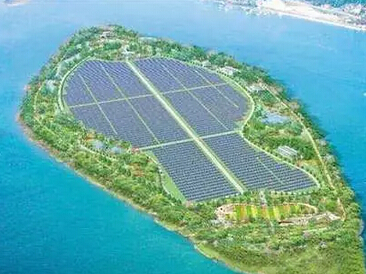Liang Zhipeng, deputy director of the New Energy and Renewable Energy Department of the National Energy Administration, said that China has made significant progress in resolving wind and light, and some UHV projects that transport renewable energy have also started. In the future, we will comprehensively solve the problem of abandoning wind and abandoning light, launching a renewable energy quota system as soon as possible, and organizing a new batch of wind power photovoltaic level price projects.
"At present, the installed capacity of new energy in China has accounted for about 60% of the newly installed capacity of electricity, and the amount of power generation accounts for 8% of the total power generation. If hydropower is included, the amount of electricity generated in the entire renewable energy generation. The proportion reached 27%. In the past, this proportion was 20% for a long time." Liang Zhipeng said.
He said that the current new energy has become an important source of electricity in China. At present, the proportion of new energy power generation in 13 provinces and regions has exceeded 10%, and the highest in Ningxia has reached 21%, which is close to the level of some European countries. At the same time, under the efforts of all parties, the consumption and utilization of new energy in the country has gradually improved in recent years. From January to September this year, the rate of abandoned winds has dropped to 7.7%, and the rate of light rejection has dropped to 3%. It should be said that it is being solved. Significant progress has been made in abandoning the wind and abandoning the light.
On the other hand, some UHV projects that transport renewable energy have also been activated or built. According to Liang Zhipeng, the recently approved Qinghai-Henan UHV DC project is an UHV project that completely transports renewable energy.
For the next step, he said, the first is to accelerate the technological progress of new energy, further reduce the cost of new energy, and ultimately achieve parity with fossil energy and achieve development without subsidies.

“In fact, new energy sources in some regions have already had parity conditions. In the coming period, promoting the construction of affordable projects is an important task for us to promote the high-quality development of new energy sources, and we will also organize a new batch of wind power photovoltaic level price projects.” Liang Zhipeng said.
As for cost reduction, he said that it is necessary to improve policy mechanisms and reduce non-technical costs, including land, government management and financing costs. "The gradual improvement of these policies has created favorable conditions for us to promote the development of new energy."
Secondly, he revealed that the next step is to improve the utilization level of new energy and continuously increase the proportion of new energy in energy consumption. "According to the deployment of the Party Central Committee and the State Council, we are working hard to solve the mechanism and technical problems of renewable energy utilization. Solve the problem of abandoning water, discarding the wind, and abandoning the light."
The third is to improve the support mechanism for new energy sources and improve the policy environment for new energy development. “Accelerating the development of renewable energy is our inevitable choice. We have recently accelerated the formulation of the renewable energy quota system. The next step is to introduce as soon as possible, the minimum proportion of renewable energy consumption for each province, city and city. Such an indicator guides the way to create a lasting market demand for new energy development. At the same time, we must provide reforms and innovations, especially in the power sector, to provide more convenient, more powerful, and better-served public services for new energy development. Platform." Liang Zhipeng said.
In this regard, Zhou Dadi, executive vice president of China Energy Research Association, said at the meeting that new energy needs to be online at a cheap price. If competitive online is still being used, the challenges facing new energy sources are still severe, especially in the Midwest. If the actual power burden on the user side can be reduced, the new energy development will have huge market potential.
"If several problems such as network connection costs, land costs, financing, subsidy arrears, etc. can be solved, PV can also achieve parity at current cost." Wang Sicheng, a researcher at the Energy Research Institute of the National Development and Reform Commission, said at the meeting that the government has been working hard. The front runner program first solved the problem of boundary conditions and non-technical costs. In the future, if a large-scale commercial power station can generally regulate boundary conditions and reduce non-technical costs, the industry will be able to usher in a large-scale development without subsidies.
















 RCCN WeChat QrCode
RCCN WeChat QrCode Mobile WebSite
Mobile WebSite






![[New energy] - electric motor principle](/upload/image/20170519/20170519090819_74516.jpg)
